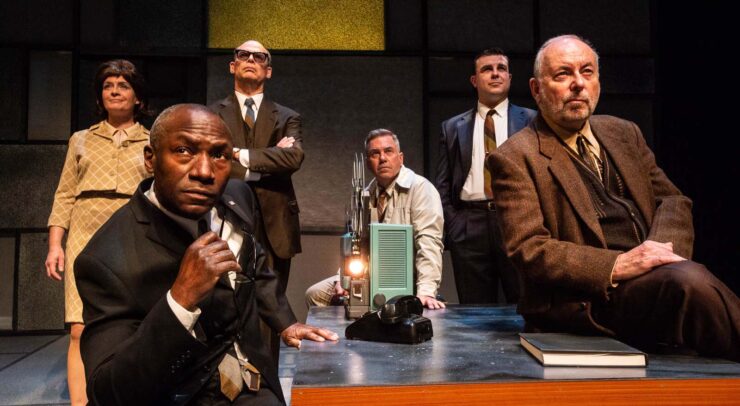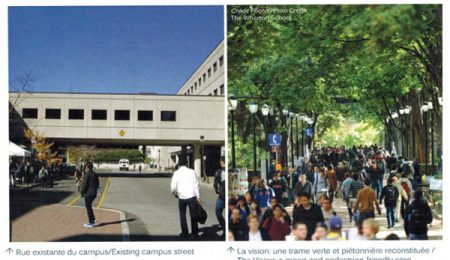Daisy is a well-produced thought-provoking production, a trip to the past, and a glimpse of the present
Daisy is a stage production written by Canadian playwright Sean Devine and co-produced with Horseshoes & Hand Grenades Theatre. Up until Dec. 8’s preview, it hadn’t been performed since its Canadian premiere last March. After more than a year since the COVID-19 pandemic closed the curtains on Daisy, Thursday night saw Hintonburg’s Great Canadian Theatre Company welcome back a nearly full crowd for Daisy’s opening night of the 2021 GCTC season — as full as health restrictions allowed, that is. The crowd was in great spirits for this play, and seemed to receive it quite well, judging by the standing ovations at its close, a sweet moment for many that signalled a return to a sense of normalcy for theatre lovers in Ottawa.
The plot centres around the ignoble Daisy attack ad employed by former US president Lyndon Johnson against Republican opponent Barry Goldwater. In the play, we are first introduced to Tony Schwartz, the creative genius behind the ad. We then meet our advertisement crew from Madison Avenue, who are embroiled for the majority of the plot in an interpersonal skirmish that pits political interests against moral integrity, raising the question of whether or not it is their job to uphold the ethics of the USA or to swap them for added revenue. Apart from their pragmatic boss, we meet another authority figure in Clifford Lewis, the White House’s legal advisor and one of Johnson’s more vocal supporters. He finds himself mixed in the campaign for his personal crusade of civil rights, and although he is criticized for supporting a still-racist democratic party, he maintains his truth that this ad is the one needed to safeguard his people from the radicalism of Goldwater.
The play itself takes place on a set divided in three parts: a boardroom, agoraphobic Tony Schwart’s basement, and the White House basement office of Clifford Lewis. All along the wall behind the actors are inky colored rectangles of various sizes that are used to project visual components of the plot, such as the main Daisy advertisement, and the cryptic opening monologue video snippet of the running horse. To add to this retro effect are furnishings reminiscent of a Mad Men episode, coupled with the actors’ costumes.
A unique aspect of Daisy is the plot’s relevance to the divisive political landscape that permeates society today. In Daisy, we encounter what the writers presume to be the inception of the modern day ‘attack ad.’ Its irreversibly deleterious effects upon American politics and the integrity of political campaigns are as discussed and feared then as they are now. But perhaps what the play overlooks are the years of McCarthyism that poisoned the American political sphere long before any ‘Daisy ad’ ran. Whether this aspect of American politics was overlooked purposely or not, its absence surely emphasizes the plotline of this play by elevating Daisy to a status of never before seen rhetoric and propaganda. Truthfully, however, the legacy of Joseph McCarthy is far more prominent and influential upon what is now known as divisive politics than the ‘Daisy ad’ that ran once in all of history. Still, Daisy is important as it is a relatively unknown and forgotten ad that reminds one of just how repugnant politics have always been: even in the 60s, the same deceptive tactics were used as they are now. Maybe this says something about the longevity of the ignorance of the masses.
Daisy is a well-produced thought-provoking production, a trip to the past, and a glimpse of the present. It lacks very little in terms of substance and performance by its actors. From the lighting to the set, all seems to click, and from the comfort of the seats, anyone watching is bound for an enjoyable two hours of an original and fresh plot. Support local theatre, learn something new and go watch Daisy at the Great Canadian Theatre Company. I’m sure you’ll enjoy it as much as I enjoyed recounting its execution.




